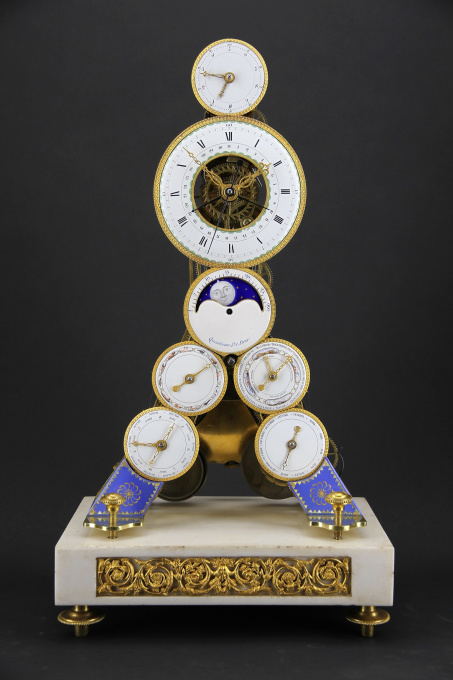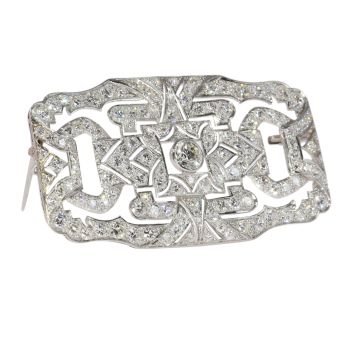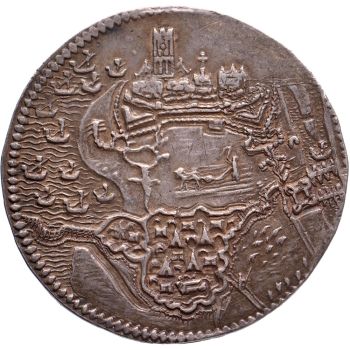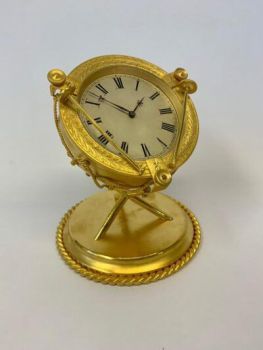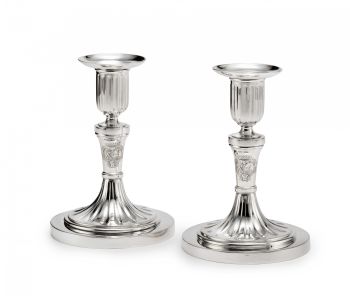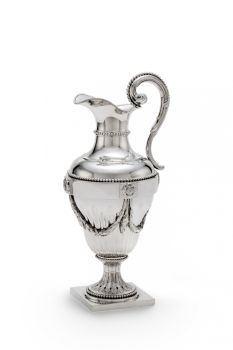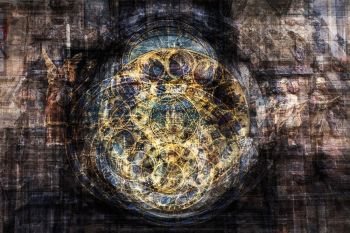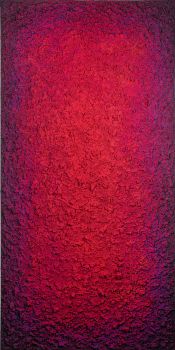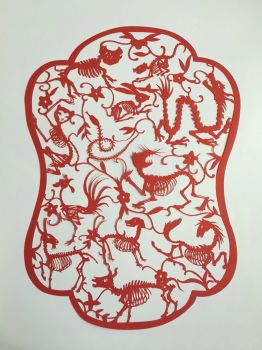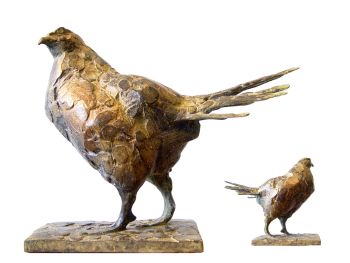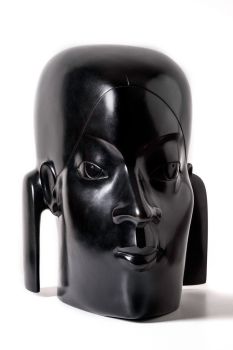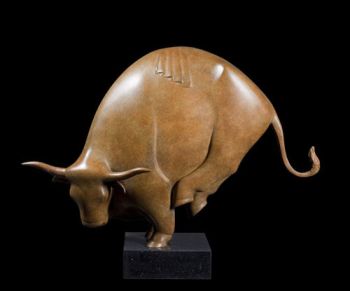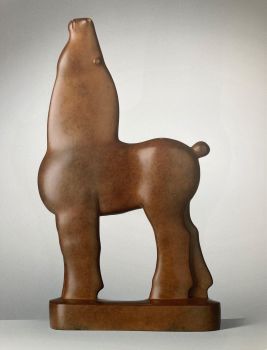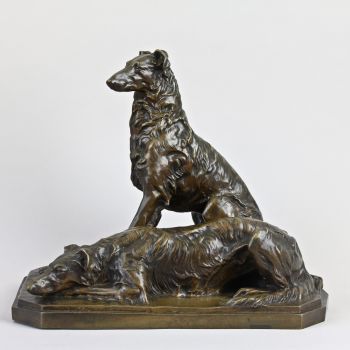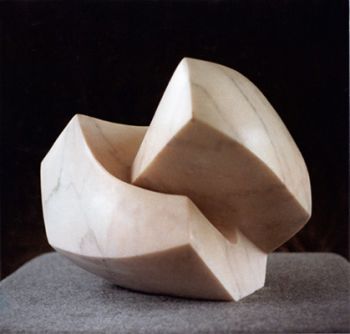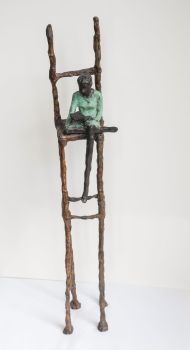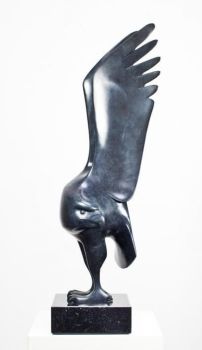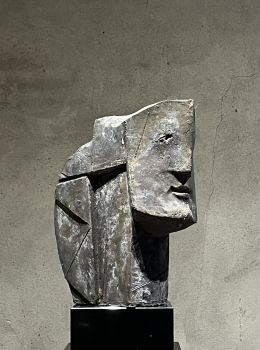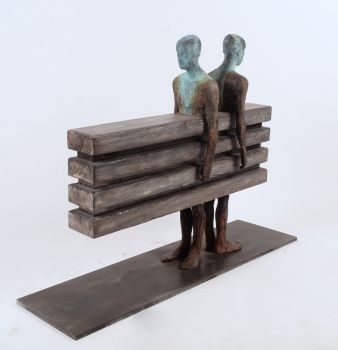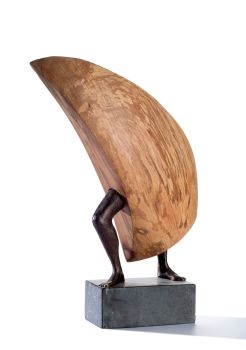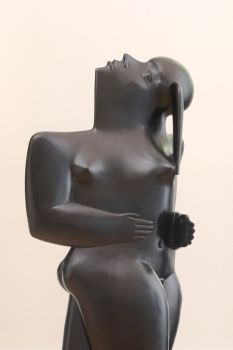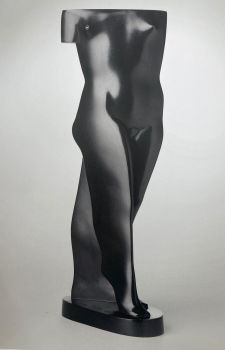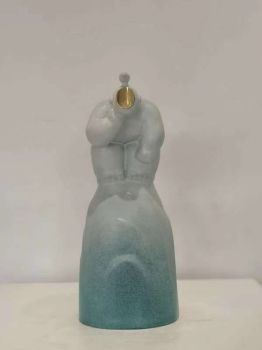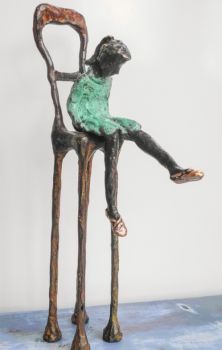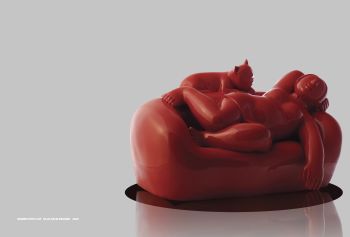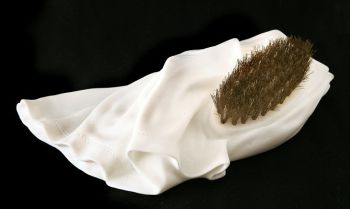French Revolutionary Skeleton Clock with Dual Time Display 1793
Onbekende Kunstenaar
MarmerSteenBronsGoudMetaalWit marmerEmailVerguld
49 ⨯ 27 ⨯ 17 cm
Momenteel niet beschikbaar via Gallerease
- Over kunstwerkA skeleton clock (pendule squelette) with 7 dials and 15 indications, signed: “Baudin”. The upper dial indicates the hour of the day in decimal time (10 hours per natural day). The large dial indicates duodecimal (conventional) time and two extra hands that respectively indicate the date in the Gregorian and the Republican calender. The lower central dial shows the phases of the moon calendar (Quantième De Lune) and the days in the moon calendar (29.5 days)
Beneath the three central dials, there are four more dials that respectively indicate:
Upper left: Zodiac with the respective constellations
Lower left: the outer ring indicates the day of the Republican décade, the inner ring indicates the day of the Gregorian week and its corresponding planet.
Upper right: the months and seasons of the Republican calender
Lower right: the months of the Gregorian calender.
The clockwork has a going train with pin wheel escapement and central seconds indication. The half-second grid pendulum has spring suspension. To level the mechanism there are set screws in each of the four legs.
The striking train for the quarter hours is located in the left leg and strikes on two bells (b1 & b2) In the right leg there is a striking train for the hours (b3).
The quarter hour striking train strikes once at 15 minutes (b1), twice at 30 minutes (b1-b2) and three times at 45 minutes (b1-b2-b1). At the hour it strikes 4 times (b1-b2-b1-b2) and subsequently the hour at b3
The left striking train drives the hands of the two lower left dials, the right striking train drives the hands of the right dials. The left winding mechanism is wound clockwise, the right mechanism is wound counter clockwise. The windlasses of the respective springs are hidden behind the blue enamelled cover plates. The date and moondate are driven by the going train.
The Revolutionary calender
The calender had 12 months of equally 30 days. The months were divided into three periods or décades of ten days. Every year starts on the autumnal equinox (when the sun is exactly of the equator). The days left to make a full year after the twelve months, were called jours supplémentaires or sanculotides. These were the day of virtue, the day of genius, the day of labour, the day of opinion, and the day of recompense. In leap years (les années sextiles) the day of the revolution was added to this range. The period of four years that ended with the day of the revolution was called a Franciade.
The poet Fabré d’Églantine was commissioned to devise new names for the months and days. months of the fall; vendémiaire, brûmaire, frimaire; months of winter; nivôse, pluviôse, nivôse; months of spring; germinal, floreal, priairial; months of summer; messidor, thermidor, fructidor.
The days of the décades were called: primedi, duodi, tridi, quartidi, quintidi, sextidi, septidi, octidi, nonidi, and décadi. Every day of the year also got its own name to replace the Catholic saints days. It was decided that days were given names of fruits, vegetables, animals, tools etcetera. The quintidis should get the name of an animal, the décadis were to be given the name of agricultural implements. - Over kunstenaar
Het kan voorkomen dat een kunstenaar of maker onbekend is.
Voor sommige werken is het niet te bepalen door wie het gemaakt is of dat het is gemaakt door (een groep) ambachtslieden. Voorbeelden zijn beelden uit de Oudheid, meubels, spiegels of handtekeningen die vaak niet duidelijk of leesbaar zijn. Maar ook sommige werken zijn helemaal niet gesigneerd.
Ook kunt u de volgende beschrijving vinden:
•"Toegeschreven aan …." waarschijnlijk een werk van de kunstenaar maar niet zeker of gedeeltelijk
•“Atelier van ….” of werkplaats van” een werk uitgevoerd in het atelier of atelier van de kunstenaar, eventueel onder zijn toezicht
•“Cirkel van ….” een werk uit de periode van de kunstenaar die zijn invloed laat zien, nauw verbonden met de kunstenaar maar niet noodzakelijkerwijs zijn leerling
•“Stijl van ….” of “Volger van ….” een werk uitgevoerd in de stijl van de kunstenaar, maar niet noodzakelijk door een leerling; kan eigentijds of bijna eigentijds zijn
•“Wijze van ….” een werk in de stijl van de kunstenaar maar van latere datum
•"Na …." een kopie (van welke datum dan ook) van een werk van de kunstenaar
•“Getekend…”, “Gedateerd….” of “Ingeschreven” dan is het werk gesigneerd/ gedateerd/ ingeschreven door de kunstenaar. De toevoeging van een vraagteken duidt op een element van twijfel
•"Met handtekening ...", "Met datum ...", "Met opschrift..." of “Draagt signatuur/datum/opschrift” dan is de handtekening/datum/opschrift toegevoegd door iemand anders dan de kunstenaar
Artwork details
Related artworks
Onbekende Kunstenaar
Engels struttclock gesigneerd H.Rodrigues 42 Piccadilly 19th century
Prijs op aanvraagNico van den Assem restauratie
1 - 4 / 12Reynier de Haan
An elegant Louis XVI Dutch Silver Monteith Bowl 1778
Prijs op aanvraagJacob J. Roosjen SRI
1 - 4 / 7Onbekende Kunstenaar
The Stamford Raffles Secretaires.1800 - 1813
Prijs op aanvraagZebregs & Röell - Fine Art - Antiques
Onbekende Kunstenaar
A RARE LARGE JAPANESE LACQUERED LEATHER TELESCOPE1750 - 1800
Prijs op aanvraagZebregs & Röell - Fine Art - Antiques
1 - 4 / 24- 1 - 4 / 7
- 1 - 4 / 24

